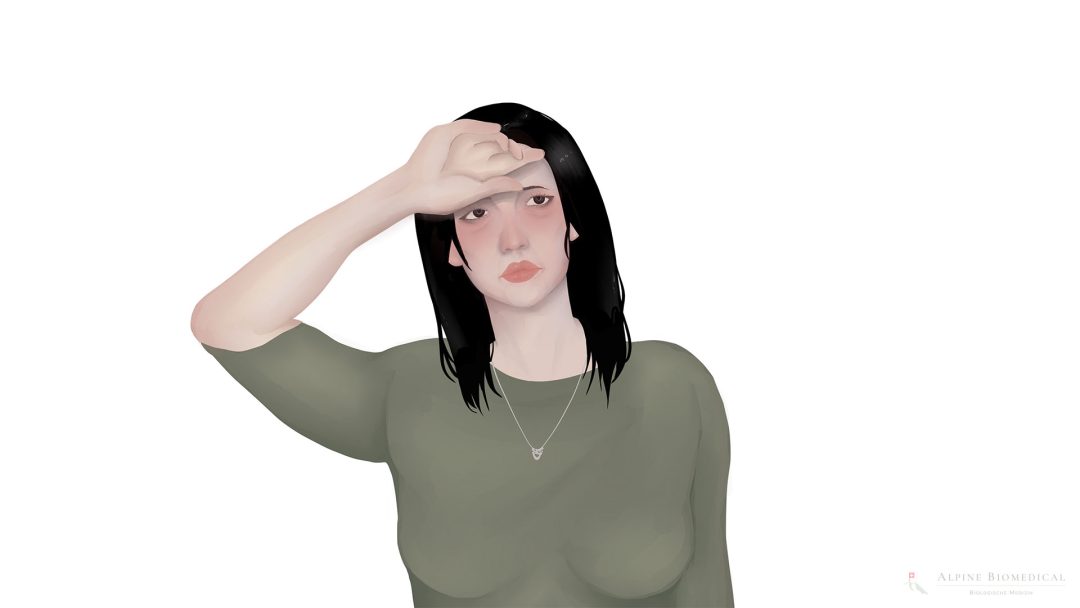Menopause
The climacteric, commonly known as the menopause, marks the transition from the fertile phase to the weakening of ovarian function in women. The menopause, the time of the last menstruation, marks this important stage of life. This transition is characterized by a decline in progesterone and oestrogen levels and an increase in the gonadotropins FSH and LH.
In the section below, we break down the topics associated with the menopause for you.
Hot Flashes
Women going through the menopause often experience hot flushes, with sweating and heart palpitations.

Sleep Disorders during Menopause
Women going through menopause often experience sleep disorders. Sleep can be optimised again with natural measures.

Symptoms of the Menopause
While some women hardly notice the hormonal changes during the menopause, others experience typical symptoms:
- Hot flushes
- Palpitations and heart palpitations
- Sleep disorders
- Mood swings and depression
- Vaginal dryness and a decrease in libido.
- Weight gain
- Joint pain
- Hair loss
- Dry and blemished skin
- Increase in body hair, e.g. lady's beard
Diagnostics and Therapy for Menopause
The main diagnostic criteria are clinical symptoms, but blood tests can also be carried out to measure hormone levels.
Conventional medicine often relies on hormone replacement therapy with an oestrogen-progestin combination or oestrogen monotherapy. However, these synthetic compounds can have many side effects, particularly in relation to certain types of cancer, which must be taken into account.
Holistic medicine offers alternative approaches to relieve menopausal symptoms, including detoxification cures, regulative therapies and nature-identical hormone therapy. Orthomolecular approaches to balance deficiencies with minerals, trace elements and vitamins are also common. Relaxation techniques and the regulation of the sleep-wake rhythm also play an important role.
An integrative center in which conventional and complementary medicine work together can be a promising option to achieve the best treatment success for patients.
All Blog Categories
See all blog categories below.
- Allergies
- Autoimmune Diseases
- Bone and Joint Diseases
- Cancer
- Cardiovascular Diseases
- Chronic Pain
- Dementia
- Detoxification
- Ear Diseases
- Exhaustion
- Gastrointestinal Disorders
- Immune Disorders
- Infectious Diseases
- Inflammation
- Intolerances
- Medication
- Men's Health
- Menopause
- Metabolic Disorders
- Minerals
- Neurological Diseases
- Nutritional Supplements
- Respiratory Diseases
- Skin Cancer
- Skin Diseases
- Thyroid Diseases
- Trace Elements
- Tumor
- Vitamins
- Women's Health
